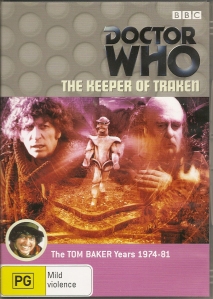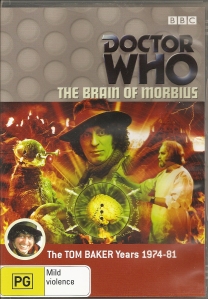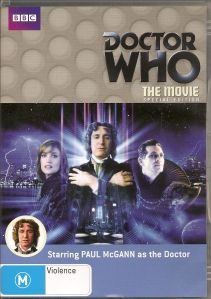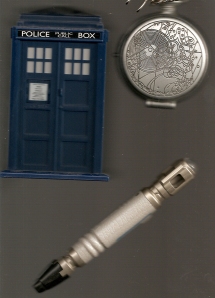The BBC announced that in the 2017 Christmas Special (“The Doctors”) that as Peter Capaldi relinquishes the role that Jodie Whittaker will take his place.
There has been much social media chatter from supporters and detractors of the Doctor undergoing a regeneration and this time becoming a female. A few thoughts are worth keeping in mind before television audiences have an opportunity to witness Whittaker in this role.
FEMALE TIME LORD CHARACTERS
There have been frivolous statements by some commentators speculating that Jodie as the Doctor might “pash” the Daleks or perhaps resolve conflict in a female-way by negotiating with the Daleks (which immediately and churlishly dismisses the entire canon of male Doctors as if they only ever oppose the Daleks by combat).
Some have erroneously stated that she is the “first” female Time Lord. This is incorrect because the series began in late 1963 with The Doctor (played by William Hartnell) being accompanied by his grand-daughter Susan (played by Carole Ann Ford). Susan departed the series taking up life in a future time-zone (22nd century) on earth (and she made a return cameo appearance in the anniversary “Five Doctors” broadcast in 1983).
The next female Time Lord (or Time Lady if you wish) to appear was the character named Romana (played first by Mary Tamm; played secondly by Lalla Ward). She journeyed as the fourth Doctor’s (Tom Baker) assistant (seasons 16, 17 & 18 from 1978-1981). She evidenced tremendous intelligence and tenacity.
Another female Time Lord was the renegade character called The Rani (played by Kate O’Mara). The Rani was opposed by the sixth Doctor (played by Colin Baker) and seventh Doctor (played by Sylvester McCoy). The most recent female renegade Time Lord was Missy (Michelle Gomez) who had in earlier regenerations been a male Time Lord known as The Master.
The examples above show-case that female Time Lords not only exist but may rise to prominent positions as characters within the Who Universe. Lesser roles assigned to female characters who were Time Lords include:
- The Inquisitor (played by Lynda Bellingham) in The Trial of a Time Lord.
- The Woman (Claire Bloom) in The End of Time (the plot hints that she is The Doctor’s mother).
- The Female General (T’nia Miller) in Hell Bent regenerates having previously been a male general on the Doctor’s home planet Gallifrey.
- Jenny (Georgia Moffett) in The Doctor’s Daughter appears to carry the Time Lord capacity for regeneration. She acts as a soldier who is youthful, proficient, athletic and trained for combat without fear.
The possibility of The Doctor regenerating from male to female was depicted in the 1990s comedic non-canonical telethon-broadcast The Curse of Fatal Death where the Doctor undergoes several regenerations (played in succession by Rowan Atkinson, Richard E. Grant, Jim Broadbent and Hugh Grant) which culminates in another regeneration played by Joanna Lumley.
STRONG FEMALE CHARACTERS IN DOCTOR WHO
Other social media discourses that celebrate Jodie Whittaker’s appointment have been accompanied by remarks that young girls will finally have a strong female hero to emulate from the series.I suggest that in the excitement to emphasise “at last a female doctor” the role of strong female characters from the past has been overlooked with respect to various assistants/companion characters. The following section offers just a few (but not exhaustive) examples.
It is true that several of the Doctor’s female companions/assistants were typecast as stereotypical women who scream in fear when encountering the threats of alien monsters and require being rescued by the Doctor (e.g. such as the characters Victoria Waterfield, Jo Grant, Mel Bush).
However, it is misleading to assume that all females have been primarily typecast as hysterical screamers who were hopelessly driven by emotions and lacked intellectual strength or other strong character qualities worth emulating. Several female companions were competently qualified in various careers when they joined the Doctor in time-travel.
The 1960s examples
The first Doctor also travelled with Barbara Wright (played by Jacqueline Hill) and she was teaching history at the London high school where the Doctor’s grand-daughter Susan attended. Barbara is depicted as an inquisitive and logical woman who poses questions and challenges the stances sometimes taken by the Doctor.
Another character who was a quasi-companion of the first Doctor was Sara Kingdom (Jean Marsh) who appeared in two episodes of The Daleks Master Plan. She is a space agent who evidences independence of mind, an ability to fight, plus a streak of ruthlessness. She perishes in the adventure.
The second Doctor (Patrick Troughton) travelled with Zoe Heriot (played by Wendy Padbury). She was an astrophysicist working on a space station in the 21st century when she joined the Doctor. There were occasions where she was obliged to be a screamer. However, she also evidenced a photographic memory and possessed an advanced mathematical ability. She caused a computer being used to aid the Cybermen to self-destruct (The Invasion) by supplying it with an equation to solve which cannot be solved.
The 1970s examples
The third Doctor (Jon Pertwee) was exiled to earth in the late 20th century. His first assistant was the physicist Liz Shaw (Caroline John). She held doctoral degrees in medicine and physics from Cambridge University, was highly knowledgeable in a range of other academic studies, and she evidenced high intelligence in her role as a scientist working with the Doctor.
Another companion who brought a feminist perspective to matters was Sarah Jane Smith (Elisabeth Sladen). She accompanied both the third and fourth Doctors on adventures, and encountered later regenerations of The Doctor (e.g. Five Doctors, School Reunion, Stolen Earth, Journey’s End, End of Time). Her earthly career was that of a freelance magazine journalist who had an inquisitive mind. In some stories she seemed petrified of aliens. However she was loyal and demonstrated courage in times of stress. In the later adventures, where she met the tenth Doctor (David Tennant), as well as in her spin-off series The Sarah Jane Adventures, she evidenced tenacity and an ability to use technology to her advantage in opposing alien threats. She also met the Eleventh Doctor (Matt Smith) in Death of the Doctor.
A very different kind of character was the huntress Leela (Louise Jameson) who used her intuitive ability, as well as her skills in physical combat, to fearlessly confront aliens. In part she played a Pygmalion role to the Doctor’s tutelage but she was a very courageous character.
1980s and beyond
Nyssa (Sarah Sutton) was principally a companion with the fifth Doctor (Peter Davison). She was a younger aged character who possessed high intelligence as a biochemical engineer.
Ace (Sophie Aldred) was principally a fighter even though she was sometimes forced to face some personal fears and brushes with death with screams. She struck several Daleks with a specially charged baseball bat and was adept at devising home-made bombs.
In the 21st century revival of the series, the leading female companions Rose Tyler (played by Billie Piper), Martha Jones (played by Freema Agyeman) Donna Noble (played by Catherine Tate) all reflect street-wise, liberated female roles. Martha is a qualified physician. A recurrent trope that was introduced by Russell T. Davies is that humans are capable of saving themselves and being quite heroic without necessarily needing the exclusive intervention of a messianic Doctor as the saviour of the world.
Perhaps the most outstanding female character to match the Doctor for brilliance is his companion and one-time spouse Professor River Song (Alex Kingston). She uses her intelligence, advanced scientific knowledge, wit and charm in clever and disarming ways. She is hardly the proverbial “wilting violet” female (i.e. shy retiring type).
From a theological angle, it is well-worth recalling that in creation theology both female and male equally represent the image and likeness of God (Genesis 1:26). The Doctor is a saviour-like character who cares for humans. Time will tell when the new series is broadcast but I believe that it is safe to say that Jodie Whittaker as a female incarnation of the Doctor will presumably maintain that same quality of care.

![images[9]](https://doctorwhoandtardis.wordpress.com/wp-content/uploads/2012/09/images9.jpg?w=584)

![title_32[1]](https://doctorwhoandtardis.wordpress.com/wp-content/uploads/2012/09/title_321.jpg?w=584)



















